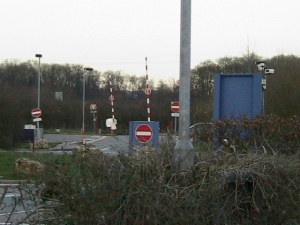General
Miscellaneous Trivia.
One day I might get around to categorising it 😉
Before 1978, the government took a rent which was based on annual turnover. This left little incentive for the development of the sites, as most of the profit would have to be handed over to government. This was reported by a the “Prior report” in 1978 and at the reports recommendation, sites were then let on a 50 Year Lease, on a competive tender basis. To encourage competition, after 1978 sites were not let to the same operator as neighbouring sites where possible.
Just because a site is run by a particular operator does not mean they have the lease. For example, at South Mimms, the “Head lease” is owned by BP, not Welcome Break. BP have supply arrangements with Welcome Break to provide the services. Other “Oil” owned sites are Anderton (M61), Killington Lake (M6) (both again by BP) and Burton West(M6), which was owned by Mobil, presumably now by BP.
Originally, upon construction of a motorway, the Government would identify the sites for motorway services and these were then were leased to private operators, who agreed to certain conditions, for example 24 hour opening and provision of toilet facilities. Development was under tight control for many years as the belief of Government was that movement of traffic should be free from interruption.
All successive governments have adhered to the policy that motorway services must be stop-off points, not destinations in their own rights. This is why the shops sell convenience items. This policy is backed up with a further policy that no more than 5,000 sq ft of a MSA can be for retail (excluding the fuel shop), and no more than 1,000 sq ft. for leisure. So next time you find the amusement centre is crowded, blame the government 😉
The minimum distance between services was decreed as 25 miles (on the basis that this is about a half hours journey), with exceptions only where necessary (known as infill sites). In the 1970’s the DOT acquired a few sites for potential development as “infill” sites, but only 2 were developed (Sandbach M6 and Rothersthorpe M1)
In February 1992, the government deregulated the provision of motorways services. The minimum distance has now been changed to 15 miles- but only for locations where there is a clear need for such a short distance between services on safety grounds. Since then, 100’s of applications have been submitted for new Motorway service areas, prompting many planning appeals, as local Planning Permission procedures and decisions affect whether or not a site can actually be built.
The case for the development of a new Motorway service area is unusual in planning policy as applicants must demonstrate a need for the area in that location. If the need is not there then this counts as a negative point in consideration of the application.
Services must provide: Adequate free short term parking, Fuel, Toilets, Picnic area, Full disabled access, 24 hour opening of toilets and refreshment facility. They are not permitted to sell alcohol.
Studies have shown that Offline Service Areas (those without direct access to the motorway) have a lower turn off rate than others (on-line areas)
The government no longer owns the land at all the MSA sites. In 2004, it held the freehold of 21 of the 64 sites, valued at £28,626,000 (more)
The government has arranged for research into the effectiveness of Motorway service areas in reducing fatigue.
Many MP’s had letter complaining about prices at Motorways Services, so the Office Of Fair Trading investigated. In December 2000 they reported that complaints about value for money were justified, but services operators were not operating anti-competitively.
Granada wanted to have drive-in movies at all of its MSA’s. (would appear that would contravene the not-a-destination rule- but the motley fool reports the news here)
When the Princess of Wales’s coffin was driven up the M1, signs from a safety campaign near MSA’s saying “Tiredness can kill, Take a break” were taken down to prevent anyone getting a photo showing the hearse juxtaposed with the sign.
33 sites have received 5 Star Loo of the year Award 2003 in the Road Transport Category. The loos would have been inspected during the busy summer season.
The best overall (in 2003) were :
England: Moto Stafford (M6) – Northbound site
Scotland: Moto Kinross
Wales: Moto Swansea (M4) (also best individual category entry in Wales)
Full details of the scheme on the Loo Of the Year website, or download their PDF 2003 results
In late 2011, the government changed the law to allow up to 6 logos on approach signs. Previously only the operator name, and generic symbols indicating what was available was allowed. In the years preceeding this decision, MSA operators had found a way around the rules was to rename the “operator” of the site a name such as “Waitrose Costa Coffee” in order to get a couple of names on the approach board.
 |
Secret exitsSome web chat sites talk of “secret” exits at some MSA’s. By driving through a gate at an MSA you can end up on local roads. These access roads are in place for the use of delivery vehicles and emergency vehicles to get to the MSA. Sometimes drivers have used them to escape traffic, (or even as a handy exit) and government has made the MSA’s take action to prevent this. A locked gate isn’t always practical, so an automatic gate is often used. Here is a double gate in use at Clacket Lane, (multimap ariel picture) and whilst both barriers are up, they were generally down – although hotel users were permitted to exit this way with a card. |
